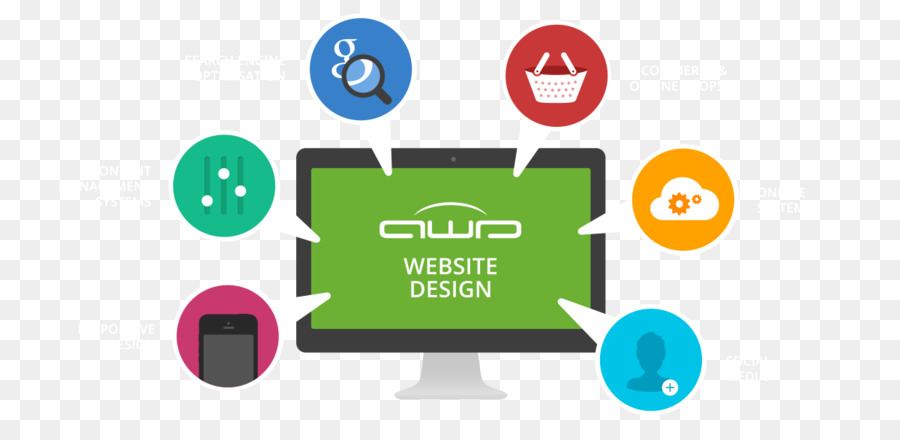The Evolution Of Website Style: From Past To Present
The Evolution Of Website Style: From Past To Present
Blog Article
Web Content Created By-Pappas Hejlesen
In the past, web sites were basic and concentrated on info. Navigation was direct, and style was for desktop computers. Now, individual experience is vital. Information guides layouts for very easy navigation. Responsive designs fit various tools. Today, dark setting decreases stress, and minimalist menus enhance navigating. Interactive attributes involve individuals, and vibrant visuals stick out. https://www.business2community.com/search-engine-optimization/3-differences-between-seo-and-sem-in-digital-marketing-02445635 enhances engagement. See exactly how design has evolved to improve your on the internet trip.
Very Early Days of Web Design
In the very early days of website design, simpleness preponderated. Sites were standard, with restricted shades, fonts, and formats. The focus was on providing details rather than flashy visuals. Users accessed the net with slow dial-up connections, so speed and functionality were vital.
Navigation menus were straightforward, generally situated on top or side of the web page. Web sites were designed for desktop, as mobile surfing had not been yet prevalent. Content was king, and designers prioritized simple readability over complicated design components.
HTML was the primary coding language utilized, and developers had to work within its constraints. Computer animations and interactive features were marginal compared to today's criteria. Websites were fixed, with little dynamic content or individualized user experiences.
Rise of User-Focused Style
With the development of web site style, a shift in the direction of user-focused design principles has actually come to be significantly prominent. Today, developing sites that focus on user experience is essential for involving visitors and accomplishing organization objectives. User-focused layout entails recognizing the demands, choices, and behaviors of your target market to customize the website's layout, content, and features accordingly.
Developers currently perform extensive research, such as user surveys and use testing, to collect understandings and comments directly from users. This data-driven approach aids in producing instinctive navigation, clear calls-to-action, and visually attractive interfaces that resonate with visitors. By placing the individual at the facility of the layout process, sites can supply a more individualized and satisfying experience.
Responsive design has actually additionally become a crucial aspect of user-focused layout, making sure that internet sites are maximized for numerous tools and screen dimensions. https://www.google.com/maps/place/Moon+and+Owl+Marketing/@32.9757271,-106.5344695,1840583m/data=!3m1!1e3!4m6!3m5!1s0x864ddeaa4179705b:0x488d41d2cc6b9750!8m2!3d32.9757271!4d-97.5696258!16s%2Fg%2F11b6mpccrg?entry=ttu&g_ep=EgoyMDI1MDIxMS4wIKXMDSoJLDEwMjExNDUzSAFQAw%3D%3D and use, accommodating the diverse means customers interact with sites today. Essentially, the increase of user-focused layout represents a shift in the direction of producing electronic experiences that prioritize the requirements and assumptions of completion user.
Modern Trends in Web Design
Check out the current trends shaping web design today. One prominent pattern is dark setting design, using a streamlined and modern look while reducing eye pressure in low-light atmospheres. Another crucial pattern is minimal navigating, streamlining menus and enhancing user experience by focusing on essential elements. Incorporating micro-interactions, such as computer animated switches or scrolling impacts, can produce an extra interesting and interactive web site. Receptive style continues to be important, guaranteeing smooth customer experiences throughout various gadgets. Additionally, using strong typography and unbalanced designs can add visual passion and draw attention to certain content.
Integrating AI modern technology, like chatbots for consumer support or customized referrals, boosts user engagement and simplifies processes. Accessibility has also come to be a considerable pattern, with developers prioritizing inclusive design techniques to accommodate diverse individual demands. Welcoming sustainability by maximizing internet site performance for rate and efficiency is an additional emerging pattern in web design. Working together with individual responses and data analytics to repeat and enhance design continuously is crucial for remaining relevant in the ever-evolving electronic landscape. By embracing these contemporary patterns, you can develop an aesthetically attractive, straightforward web site that resonates with your audience.
Conclusion
As you review the advancement of website layout from the early days to currently, you can see exactly how user-focused design has actually become the driving force behind modern trends.
Embrace the journey of change and adjustment in website design, always maintaining the individual experience at the forefront.
Stay present with the most up to date trends and technologies, and never ever quit developing your technique to develop aesthetically stunning and straightforward websites.
Develop, adapt, and develop - the future of website design is in your hands.
